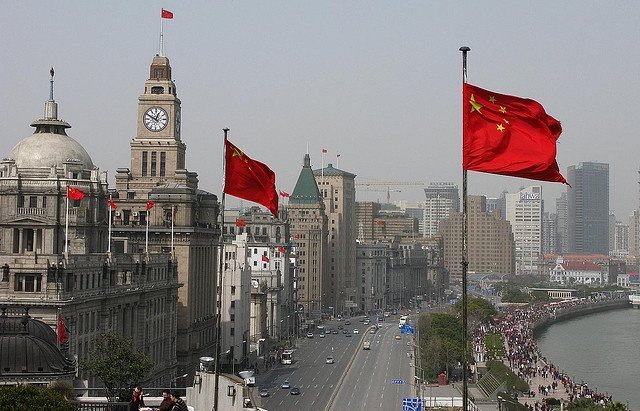 The Asia Essentials express Australia’s experiences during more than two decades of slow institutional construction in Asia since the end of the Cold War. The emerging weak system is an expression of Asian habits of ‘soft regionalism’, as opposed to the Western habits of ‘hard regionalism’ as expressed in institutions such as NATO and the European Union.
The Asia Essentials express Australia’s experiences during more than two decades of slow institutional construction in Asia since the end of the Cold War. The emerging weak system is an expression of Asian habits of ‘soft regionalism’, as opposed to the Western habits of ‘hard regionalism’ as expressed in institutions such as NATO and the European Union.
Given its preferences, Australia would always choose ‘hard regionalism’, based on legal agreement, enforceable treaties and agreed norms. The experience of the past two decades, though, is that Asia’s own multilateral security system can only emerge through the ‘soft regionalism’ of consultation and consensus inculcated by ASEAN.
Australia’s ‘hard regionalism’ instinct had to soften markedly in two big efforts—20 years apart—at creating an Asia Pacific Community. The 1989 version became APEC (Asia Pacific Economic Cooperation). In the original Australian vision, the C in APEC would stand for Community. Asia wasn’t ready for the legal or social ambition of Community (nor the European model of economic and diplomatic Community).
Australia again confronted the essence of the Essentials as it pursued Kevin Rudd’s initiative for an Asia Pacific Community. Launched in 2008 as a quest for Community, the effort was re-named in 2009—going from large C to small c and becoming a discussion about community. By 2010, Rudd had to concede that the best available expression of his desired community would be in ASEAN’s expansion of the East Asia Summit to include the United States and Russia. As Australia had to step back from Community to community, so Asia is reaching for a concert (not Concert) as what’s currently achievable.
In grappling with the intricacies and possibilities of the Essentials, Australia poses a question that’s also a deep fear: can Asia create a concert to avert cataclysm? Or, to pose the question using the history of Europe in the 20th Century: is Asia today poised where Europe was in 1900 or 1950? If it’s 1900, economic interdependence and globalisation will be overturned by a naval arms race, surging nationalism, deepening apprehension and the growing chance of great power miscalculation. If it’s 1950, then Asia will use the lessons of history to build new regional institutions and legal regimes that redefine state interests and remake military assumptions.
Rudd’s reach for an Asia Pacific Community and then Asia Pacific community were attempts to shift Asia towards such a 1950s frame. The cataclysm 1900 scenario was invoked by Rudd in his 2009 speech to the Shangri-La dialogue calling on Asia to build institutions to deal with the buffeting that will be delivered by economic and strategic shifts and shocks:
In the first half of the 20th Century, we saw the tragic consequences of rampant nationalism as nations competed for power. Great powers in Europe bumped up against each other without the benefit of regional institutions to smooth problems as they arose. The result was devastating conflict.
The European Union can’t be an identikit model for the Asia Pacific but, as Rudd noted, the EU shows what the aspiration to community can achieve:
In the 1950s, sceptics saw European integration as unrealistic. But most people would now agree that the goal of the visionaries in Europe who sat down in the 1950s and resolved to build prosperity and a common sense of security community has been achieved. It is that spirit we need to capture in our hemisphere.
So, is Asia’s future where Europe is today, or is Asia’s future the European past? Will economic cooperation or strategic competition take precedence? The Australian community effort and the emerging Asian concert seek to evade the cataclysm conundrum.
To finish on that point, (and throw forward to the next column), cast your eyes on Known unknowns: Uncertainty about the future of the Asia-Pacific, a great paper by Andrew Davies and Mark Thomson pondering the European example and the Asian future:
What’s clear is that if a serious strategic competition emerges in Asia in the decades ahead, the US will expect a lot more from its allies than it does today—politically and militarily. The region would be held hostage to the happenchance of crises—events of perhaps limited intrinsic importance but upon which the credibility and resolve of protagonists are tested. Compared with Europe a century ago, Asia today is even more cursed with unresolved issues from which a crisis could develop. Strategic crises can be resolved—or at least temporarily defused—by negotiation (Munich, 1938; the Cuban missile crisis, 1962), by force (WWI; the Falklands War in 1982) or by a combination of both (Berlin Airlift, 1948–49; Suez, 1956). But in any case, they can represent a dislocation—things won’t generally be the same after as before. That means that our ability to look forward is radically constrained.
But one modest point can be made: it’s possible that the great powers could muddle through. WW I wasn’t inevitable and, with better communication (which we have today) and more adroit diplomacy, the war to end all wars might have been averted. And, despite numerous crises and proxy wars, the Cold War never erupted into outright conflict. It might even be the case that a crisis of sufficient gravity could force a grand bargain along the lines discussed above—although that, too, would reshape the strategic landscape in unforeseeable ways.
Graeme Dobell is the ASPI journalist fellow. Image courtesy of Flickr user ullrich.c.

